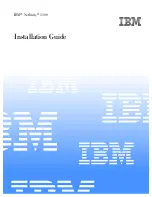
ConnectPort LTS features
Serial data communication over TCP and UDP
Digi ConnectPort LTS User Guide
15
n
Telnet client
n
Telnet server
n
Reverse telnet, often used for console management or device management
n
Telnet autoconnect
For more information on these connections, see
Network connections and data paths
. You can enable
or disable access to telnet network services.
Remote login (rlogin)
You can enable or disable access to rlogin service. When enabled, users can use rlogin to remotely sign
in to systems.
Line Printer Daemon (LPD)
The Line Printer Daemon (LPD) allows network printing over a serial port. Each serial port has a
dedicated LPD server that is independently configurable. You can enable or disable access to LPD
service.
HyperText Transfer Protocol (HTTP)/HyperText Transfer Protocol
over Secure Socket Layer (HTTPS)
Digi provides web pages that you can use to configure the ConnectPort LTS product. You can secure
these web pages by requiring a user login.
Internet Control Message Protocol (ICMP)
You can display ICMP statistics, including the number of:
n
Messages received
n
Bad messages received
n
Destination unreachable messages received
Point-to-Point Protocol (PPP)
The Point-to-Point Protocol (PPP) transports multi-protocol packets over point-to-point links. PPP is
responsible for:
n
Encapsulating the data packet
n
Allowing the server to inform the dial-up client of its IP address (or client to request the IP
address)
n
Authenticating the exchange
n
Negotiating multiple protocols
n
Reassembling the data packet for network communication
Advanced Digi Discovery Protocol (ADDP)
The ADDP runs on any operating system capable of sending multicast IP packets on a network. ADDP
allows the system to identify all ADDP-enabled ConnectPort LTS products attached to a network by
















































